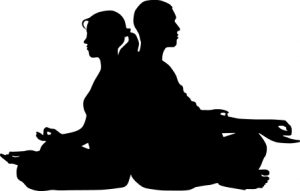Meditation is a great way to reduce stress and help overall health. It is both spiritual as well as holistic from a health standpoint but it is important to understand how it works to properly apply it. Meditation if properly practiced and applied can give numerous benefits to mind body and soul.
If meditation is spiritual, obviously the proper aim and understanding of it as an elevation to a spiritual realm is important but if just utilizing it for its secular benefits of mind and body is important if one wishes to receive its benefits. This involves proper settings, focus, posture and breathing. Without the ability to find quiet and peace, one will have a far more difficult time finding the ability to enter a more passive mind state. Breathing is extremely important as well. Different types of breathing techniques help the body calm and be able to reduce stress and find the needed balance. Hence it is extremely important to utilize good meditation form.

The article, “What Is Meditation?” from Cleveland Clinic healthesssentials reviews the proper methods of utilizing meditation. The article gives an indepth look at what meditation is and the many types one can utilize. It also lists important techniques that ensure its effectiveness. The article states,
“If we’ve learned anything in the last few years, it’s that tending to our mental health is as important as taking care of our physical health. Regular exercise certainly gives us a brain and body boost, as does maintaining a healthy diet. But meditation is also becoming an increasingly popular way to nurture your whole self. ”
The article continues, “Meditation can feel daunting if you’ve never done it before. And some types of meditation aren’t easy to do on your own. For example, because guided imagery is always directed by someone else, Sherwin notes this type is “a little bit harder to do if you’re standing in line at the grocery store.”
To read the entire article, please click here
Commentary
Meditation is a practice in which an individual trains the mind or induces a mode of consciousness, either to realize some benefit or for the mind to simply acknowledge its content without becoming identified with that content. The term meditation refers to a broad variety of practices that includes techniques designed to promote relaxation, build internal energy or life force (qi, ki, prana, etc.) and develop compassion, love, patience, generosity and forgiveness.
In order to properly meditate, one must first find a comfortable position in which to sit or recline. Once settled, the individual must then focus their attention on their breath and allow their thoughts to flow in and out without judgement or attachment. It is important to maintain a sense of detachment from the thoughts as they come and go, otherwise the individual will become caught up in them and the meditation will be less effective.
Setting, posture and breathing
There are a few key things to keep in mind when setting up a space for meditation. First, it is important to find a place where you will not be disturbed. This means choosing a spot where you can sit comfortably without being interrupted. Second, it is helpful to have a straight back when meditating, so finding a chair or sitting on the floor with your back against a wall is ideal. Finally, it is important to focus on your breath and let go of all other thoughts.
Proper meditation posture is extremely important for achieving the optimal meditative state. The most important thing to remember is to keep the spine straight, as this allows for the free flow of energy. The head should be tilted slightly upward, with the chin parallel to the floor. The spine should be straight, the shoulders relaxed, and the chin slightly tucked in. The hands can be placed palm up on the thighs or placed in a mudra. The legs should be crossed with the right ankle over the left knee. The eyes should be closed and focused on the third eye point.
Proper meditation breathing is an important aspect of the practice. The breath is a vehicle for the mind and the body to connect with the present moment. When we breathe deeply and slowly, it helps to calm the mind and bring our attention to the present moment. The breath should be deep and smooth, without any pauses. Inhale and exhale evenly, and focus on the sensation of the breath.
Conclusion
In conclusion, proper meditation can be a very effective tool in managing stress and anxiety. However, it is important to find a method that works for you and to be consistent with your practice. Meditation is not a quick fix, but it can have lasting effects if you stick with it. It is essential though to properly practice it to achieve these effects. With time and practice, one can better master the techniques to find the mental state of mind necessary to reduce stress and improve overall health. If you’re looking to reduce stress and improve your overall wellbeing, give meditation a try.
Please also review AIHCP’s Meditation Instructor Program and see if it meets your goals. The program is online and independent study and open to qualified professionals seeking a four year certification as a Meditation Instructor. Once the core courses are completed, qualified professionals can earn the four year certification. As a certified Meditation Instructor, individuals can help others learn the health benefits of meditation while also incorporating proper techniques in breathing and form for their students.
Additional Resources
“How to Meditate”. Mindful. Access here
“28 Best Meditation Techniques for Beginners to Learn”. Leslie Riopel. Nov 29th, 2019. PositivePsychology.com. Access here
“5 Meditation Techniques to Get You Started”. Elizabeth Scott, PhD. March 25th, 2020. Verywellmind. Access here
“What’s the Best Meditation Technique for You?”. Nora Isaacs. February 17th, 2012. Yoga Journal. Access here
